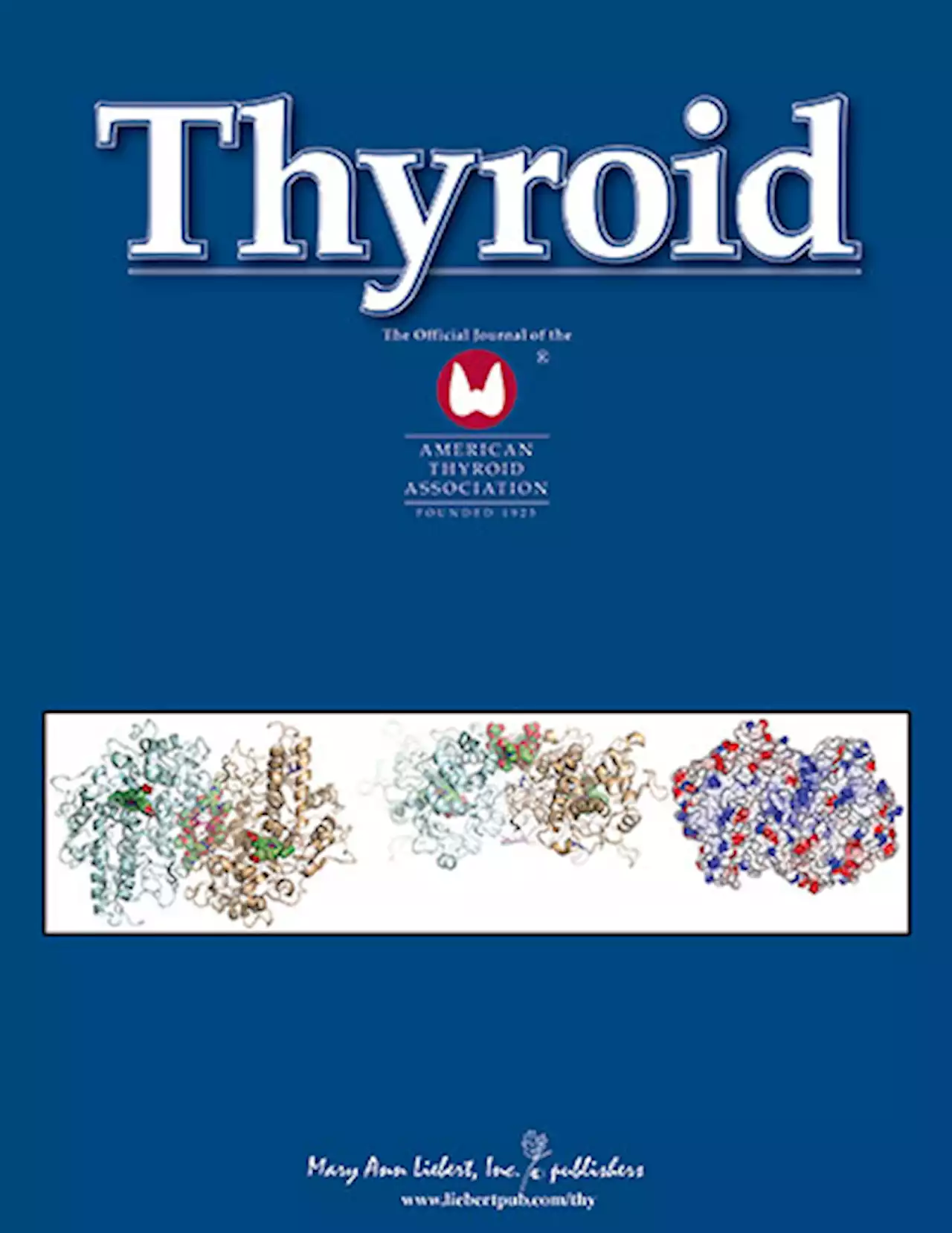Small, specific subpopulations of hypothalamic neurons play a major role in regulating the thyroid system BUMedicine
Since a positive energy balance does not inhibit the HPT axis, the direct action of AgRP/NPY neurons must be regulating the HPT axis through suppression of TRH neurons.
Since fasting activates AgRP/NPY neurons, we wanted to determine if inhibiting their activation during fasting would prevent the fall in TH levels seen during a fast by blocking their downstream effects on TRH neurons. Indeed, our results confirm this hypothesis, showing that inhibition of ARC AgRP/NPY neurons disrupts the normal response to fasting, preventing HPT axis suppression.
However, it is still not clear why PVN TRH neurons do not respond to the low TH levels seen in fasting as the presumption has always been that all hypophysiotropic TRH neurons express MC4R, NPY receptors, and the TRβ and thus should respond to all signals. Indeed, it is reasonable to propose that TRH neurons integrate this multitude of inputs, initiating a metabolic response through the regulation of the HPT axis. To test this, we aimed to disrupt TH signaling in melanocortin-responsive neurons.
In summary, the present work shows a direct relationship between an ARC-PVN circuitry using chemogenetic techniques, and this circuitry is directly responsible for the HPT adaptive response to negative energy balance. Indeed, fasting-induced HPT axis suppression requires inhibition of TRH neurons and that is mediated, at least in part, through ARC AgRP/NPY neurons.
United Kingdom Latest News, United Kingdom Headlines
Similar News:You can also read news stories similar to this one that we have collected from other news sources.
 Newcastle United owners have now completed stunning new Academy plan - Top level resources and staffingTop level resources and staffing - Newcastle United owners have now completed stunning new Academy plan.
Newcastle United owners have now completed stunning new Academy plan - Top level resources and staffingTop level resources and staffing - Newcastle United owners have now completed stunning new Academy plan.
Read more »
 Starfield gameplay at Xbox Games Showcase promises 'freedom on a galactic level'Finally, as promised, we've had a good look at Starfield gameplay. Following the Xbox Games Showcase, we were treated t…
Starfield gameplay at Xbox Games Showcase promises 'freedom on a galactic level'Finally, as promised, we've had a good look at Starfield gameplay. Following the Xbox Games Showcase, we were treated t…
Read more »
 BBC Responds To Complaints About Coverage Of Phillip Schofield ScandalThe level of coverage the story received was the subject of complaints to the broadcaster.
BBC Responds To Complaints About Coverage Of Phillip Schofield ScandalThe level of coverage the story received was the subject of complaints to the broadcaster.
Read more »
 Ukraine war latest: Two drones 'crash in Russia's Kaluga region'; ex-US paratrooper held in Russia; water level falling after dam destructionTwo drones have crashed in Russia, according to the governor of the Kaluga region; a US former paratrooper is detained by Moscow; Vladimir Putin has said the Ukrainian counteroffensive has begun.
Ukraine war latest: Two drones 'crash in Russia's Kaluga region'; ex-US paratrooper held in Russia; water level falling after dam destructionTwo drones have crashed in Russia, according to the governor of the Kaluga region; a US former paratrooper is detained by Moscow; Vladimir Putin has said the Ukrainian counteroffensive has begun.
Read more »
 Retinal microvascular changes in diabetic patients with diabetic nephropathy - BMC Endocrine DisordersBackground To explore the characteristics of retina microvascular changes in patients with diabetic nephropathy (DN) and its risk factors. Methods Retrospective, observational study. 145 patients with type 2 diabetic mellitus (DM) and DN were included in the study. Demographic and clinical parameters were obtained from medical records. Presence of diabetic retinopathy (DR), hard exudates (HEs) and diabetic macular edema (DME) were evaluated according to the color fundus images, optical coherence tomography (OCT) and fluorescence angiography (FFA). Results DR accounted for 61.4% in type 2 DM patients with DN, of which proliferative diabetic retinopathy (PDR) accounted for 23.6% and sight threatening DR accounted for 35.7%. DR group had significantly higher levels of low-density lipoprotein cholesterol (LDL-C) (p = 0.004), HbA1c (P = 0.037), Urine albumin creatine ratio (ACR) (p | 0.001) and lower level of estimated glomerular filtration rate (eGFR) (P = 0.013). Logistic regression analysis showed DR was significantly associated with ACR stage (p = 0.011). Subjects with ACR stage3 had higher incidence of DR compared with subjects with ACR stage1 (OR = 24.15, 95%CI: 2.06–282.95). 138 eyes of 138 patients were analyzed for HEs and DME, of which 23.2% had HEs in posterior pole and 9.4% had DME. Visual acuity was worse in HEs group than in non-HEs group. There was significant difference in the LDL-C cholesterol level, total cholesterol (CHOL) level and ACR between HEs group and non-HEs group. Conclusions A relatively higher prevalence of DR was found in type 2 DM patients with DN. ACR stage could be recognized as a risk factor for DR in DN patients. Patients with DN needs ophthalmic examination more timely and more frequently.
Retinal microvascular changes in diabetic patients with diabetic nephropathy - BMC Endocrine DisordersBackground To explore the characteristics of retina microvascular changes in patients with diabetic nephropathy (DN) and its risk factors. Methods Retrospective, observational study. 145 patients with type 2 diabetic mellitus (DM) and DN were included in the study. Demographic and clinical parameters were obtained from medical records. Presence of diabetic retinopathy (DR), hard exudates (HEs) and diabetic macular edema (DME) were evaluated according to the color fundus images, optical coherence tomography (OCT) and fluorescence angiography (FFA). Results DR accounted for 61.4% in type 2 DM patients with DN, of which proliferative diabetic retinopathy (PDR) accounted for 23.6% and sight threatening DR accounted for 35.7%. DR group had significantly higher levels of low-density lipoprotein cholesterol (LDL-C) (p = 0.004), HbA1c (P = 0.037), Urine albumin creatine ratio (ACR) (p | 0.001) and lower level of estimated glomerular filtration rate (eGFR) (P = 0.013). Logistic regression analysis showed DR was significantly associated with ACR stage (p = 0.011). Subjects with ACR stage3 had higher incidence of DR compared with subjects with ACR stage1 (OR = 24.15, 95%CI: 2.06–282.95). 138 eyes of 138 patients were analyzed for HEs and DME, of which 23.2% had HEs in posterior pole and 9.4% had DME. Visual acuity was worse in HEs group than in non-HEs group. There was significant difference in the LDL-C cholesterol level, total cholesterol (CHOL) level and ACR between HEs group and non-HEs group. Conclusions A relatively higher prevalence of DR was found in type 2 DM patients with DN. ACR stage could be recognized as a risk factor for DR in DN patients. Patients with DN needs ophthalmic examination more timely and more frequently.
Read more »
 A history of repeated alcohol intoxication promotes cognitive impairment and gene expression signatures of disease progression in the 3xTg mouse model of Alzheimer’s diseaseThe impact of alcohol abuse on Alzheimer’s disease (AD) is poorly understood. Here, we show that the onset of neurocognitive impairment in a mouse model of AD is hastened by repeated alcohol intoxication through exposure to alcohol vapor, and we provide a comprehensive gene expression dataset of the prefrontal cortex by the single-nucleus RNA sequencing of 113,242 cells. We observed a broad dysregulation of gene expression that involves neuronal excitability, neurodegeneration, and inflammation, including interferon genes. Several genes previously associated with AD in humans by genome-wide association studies were differentially regulated in specific neuronal populations. Gene expression patterns of AD mice with a history of alcohol intoxication were more similar to gene expression signatures of older AD mice with more advanced disease and cognitive impairment than those of younger AD mice with prodromic disease, suggesting that alcohol promotes transcriptional changes consistent with AD progression. Our gene expression dataset at the single-cell level provides a unique resource for investigations of the molecular bases of the detrimental role of excessive alcohol intake in AD. Significance statement Alzheimer’s disease (AD) is the most common neurodegenerative disease worldwide. Many efforts have been geared toward the identification of environmental and genetic risk factors. However, alcohol has received limited attention as a potential risk factor for AD. We explored effects of the interaction of a history of alcohol intoxication with genetic AD susceptibility on cognitive performance and gene expression at the single-cell level. We found that a history of repeated alcohol intoxication promotes the emergence of spatial learning and memory impairments in pre-symptomatic triple transgenic AD (3xTg-AD) mice. We also show that a history of repeated alcohol intoxication induces prefrontal cortex transcriptional changes associated with AD progression.
A history of repeated alcohol intoxication promotes cognitive impairment and gene expression signatures of disease progression in the 3xTg mouse model of Alzheimer’s diseaseThe impact of alcohol abuse on Alzheimer’s disease (AD) is poorly understood. Here, we show that the onset of neurocognitive impairment in a mouse model of AD is hastened by repeated alcohol intoxication through exposure to alcohol vapor, and we provide a comprehensive gene expression dataset of the prefrontal cortex by the single-nucleus RNA sequencing of 113,242 cells. We observed a broad dysregulation of gene expression that involves neuronal excitability, neurodegeneration, and inflammation, including interferon genes. Several genes previously associated with AD in humans by genome-wide association studies were differentially regulated in specific neuronal populations. Gene expression patterns of AD mice with a history of alcohol intoxication were more similar to gene expression signatures of older AD mice with more advanced disease and cognitive impairment than those of younger AD mice with prodromic disease, suggesting that alcohol promotes transcriptional changes consistent with AD progression. Our gene expression dataset at the single-cell level provides a unique resource for investigations of the molecular bases of the detrimental role of excessive alcohol intake in AD. Significance statement Alzheimer’s disease (AD) is the most common neurodegenerative disease worldwide. Many efforts have been geared toward the identification of environmental and genetic risk factors. However, alcohol has received limited attention as a potential risk factor for AD. We explored effects of the interaction of a history of alcohol intoxication with genetic AD susceptibility on cognitive performance and gene expression at the single-cell level. We found that a history of repeated alcohol intoxication promotes the emergence of spatial learning and memory impairments in pre-symptomatic triple transgenic AD (3xTg-AD) mice. We also show that a history of repeated alcohol intoxication induces prefrontal cortex transcriptional changes associated with AD progression.
Read more »
